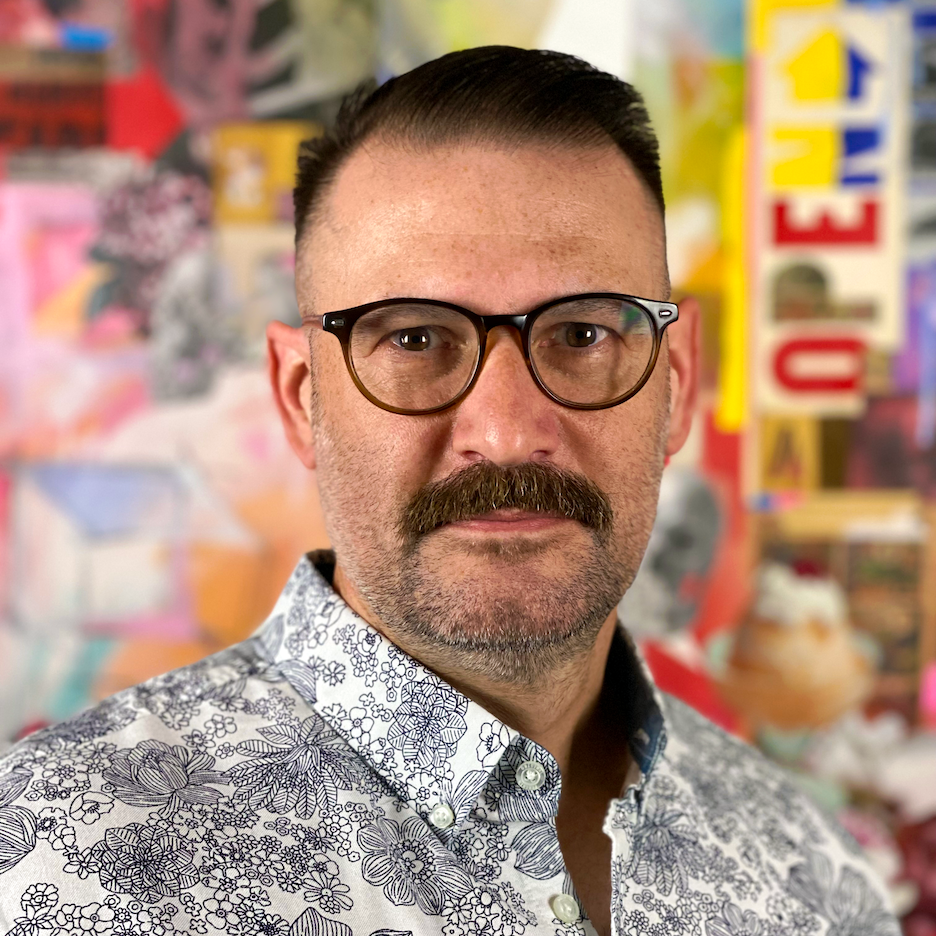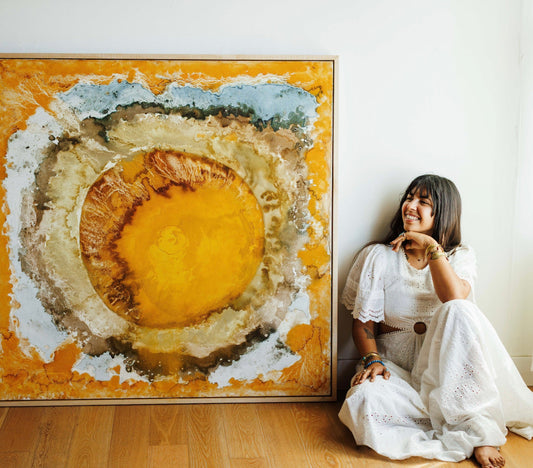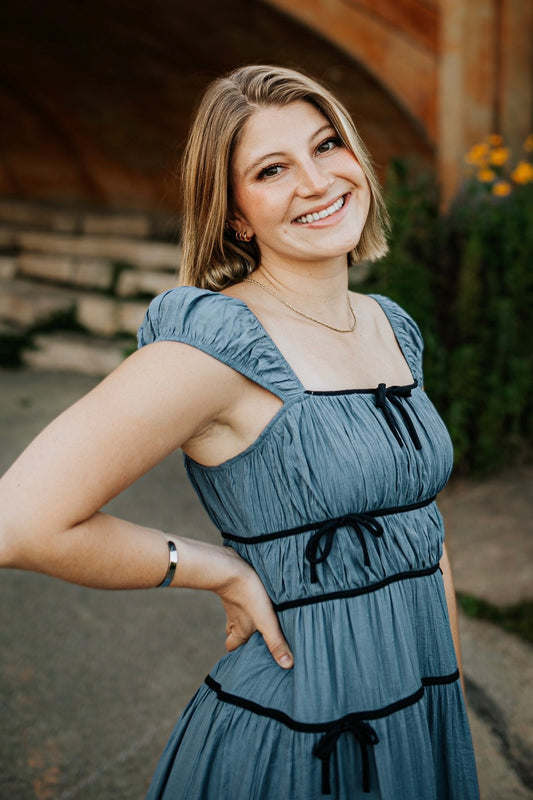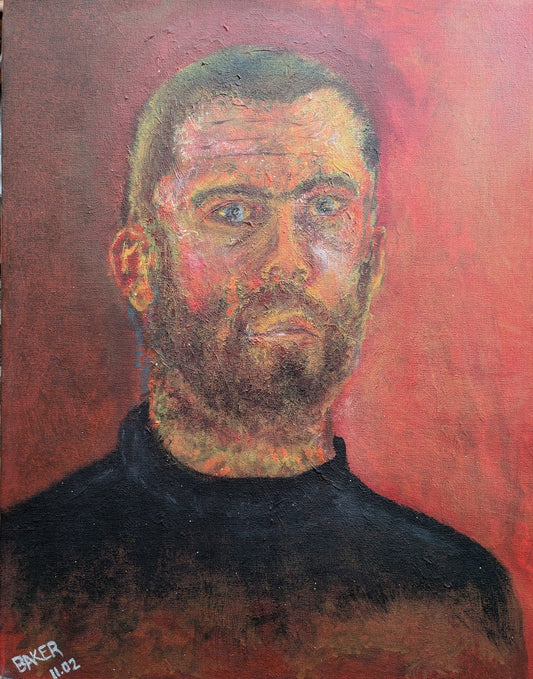David Johnson is a mixed media abstract assemblage artist who currently resides in Austin, Texas. According to Johnson, ever since he was a child, he has always been fascinated by the arts. He recalls constantly drawing and even admits that his earliest memory of making art is a sketch of a police van inspired by the 1975 TV show called S.W.A.T. He also remembers reading a bunch of comic books as a child, and even as an adult, the comic book aesthetic influences his artworks today. “Being a young kid in the 1970s was awesome. It was a wonderfully outlandish, cartoonish, exaggerated time to be alive,” Johnson states.
Johnson is a self-taught artist, but he’d taken a few art courses in the past. In high school, Johnson took two art classes called Cartooning One and Cartooning Two. While in college, he also minored in art history. “Just immersing myself in all forms of art from a visual and thematic standpoint was totally formative for me,” Johnson said. Not only is Johnson a successful mixed media artist, he is also a successful self-taught designer who designed boutique shops for multinational advertising agencies.
“The artistic life isn’t an easy one,” Johnson adds, “[e]veryone has an opinion… especially if you tackle subjects that are personal or those with any controversy attached to them.”


Despite the struggles Johnson faced as an artist and as someone who is continuously learning, he had an extensive list of accomplishments and recognitions. To name a few, Johnson had opportunities to be a juror for art shows heldacross the U.S.; had his artworks shown in selected galleries and The Other Art Fair in various cities; he had his artwork featured as an album art for Andy Grammer, a multi-platinum selling artist; he was chosen to feature in the Saatchi Art Catalog; and lastly, he was selected for inclusion in the London Art Biennale.
Johnson started his art journey by working with geometric abstracts. For him, it was fun and, obviously, successful. Viewers admired his abstract works. However, over time, he felt like the geometric abstracts were not enough—he wanted “more inherent meaning, more provocative juxtaposition and interplay,” which led to Johnson’s current artworks that we see today. According to Johnson, his abstract art “became freer and started to form the initial layer of more complex compositions.” Even though abstract art is notoriously known for its complexity, for Johnson, his works are interpretations of how he sees his own world and surroundings, like a “snapshot of [his] brain or of an experience or how [he looks] at a subject or theme.”


In Johnson’s most recent series, No Roses In December, he documents his personal experience and observation about his father’s dementia “and the haunting result of a mind in free fall.” According to Johnson, his father recently entered full-time memory care, and he openly admits that it has been strange and difficult both for the patient and loved ones. This series includes photographs of abandoned adobes and lost vistas he captured during his West Texas desert visit. The photographs illustrate “where life was” and how these places are now remnants of empty shells. He paired these photographs with “abstract, mixed media painting and an array of vintage papers, found objects and other ephemera in an attempt to express fragmented shards of memory.” At the same time, Johnson, titled the series No Roses In December as a reference to a poem by Geoffrey Anketell Studdert-Kennedy. In the poem, it states “God gave us memory so that we might have roses in December.” Unfortunately, with no memories means there are no remembered roses in December.
Johnson hopes that this series, in some way, can portray “the harrowing, lonely, and wistful process of memory loss.” As a matter of fact, Johnson wants his artworks to be like his personal time capsule. “I can see the mindset I was in when creating them and where I was in my practice,” Johnson said.


Therefore, when people witness this particular series, they get a sense of strong emotional reaction and would later reach out to Johnson to share their own dementia story. “It’s been powerful,” Johnson states.
Johnson admits that the No Roses In December series took more planning compared to his other series. He considers himself as a “lateral thinker,” meaning he is someone who has one idea after another. He starts his creative process with an idea he had in mind and does initial sketching until it turns into something more concrete. Once it is set in stone, Johnson does research and gathers his materials. For No Roses In December, one of the materials he used were shredded rubber tires he saw along the road during his West Texas desert visit. Afterwards, he begins to paint. According to Johnson, he begins with a layered, mixed-media abstract piece, then he begins to layer and build. Vast majority of his artworks are measured in 30” x 30” because it has a nice balance to it, according to Johnson. However, he has other works that went bigger than what he normally does. Overall, he just lets the artwork dictate the size.


When asked how he wants viewers to feel or experience his artworks, Johnson wants viewers to have a genuine response. It doesn’t matter whether viewers love or hate his artworks, it is all good to him as long as it is real to the viewers.
Currently, Johnson is doing studies for his two upcoming series featuring “two facets of American iconography,” which he will share on his Instagram, @davidedwardjohnsonart, quite soon. He will also be doing a showing at The Other Art Fair in Brooklyn, NY in May 2023, in which he encourages anyone who can to visit.
©ArtRKL™️ LLC 2021-2023. All rights reserved. This material may not be published, broadcast, rewritten or redistributed. ArtRKL™️ and its underscore design indicate trademarks of ArtRKL™️ LLC and its subsidiaries.





